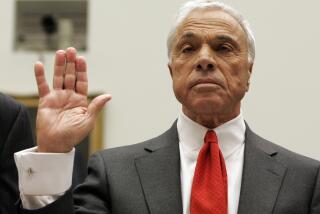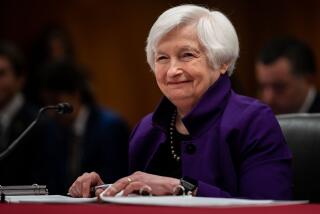Which way from sub-prime?
- Share via
Over the last two decades, major financial disruptions have taken place roughly every three years -- the 1987 stock market crash, the savings and loan collapse and credit crunch of the early 1990s, the 1994 Mexican peso devaluation, the Asian financial crises of 1997, the Russian default and Long Term Capital Management implosion of 1998, the bursting of the technology bubble in 2000, the disruptions of 9/11 and the 2002 post-Enron deflationary scare in the credit markets.
This record suggests that, by the beginning of 2007, the world was long overdue for a major financial disruption. And sure enough, the difficulties around sub-prime mortgages “went systemic” in the last month as the market seemed to doubt the creditworthiness of even the strongest institutions and rushed to buy Treasury debt.
Financial crises differ in detail. But just as there are plots common to literary tragedies, financial crises follow a common arc. First, there is overconfidence, rising asset values and leverage as investors increase their confidence in successful strategies. Second, there is a surprise event (e.g., the discovery of huge problems in the sub-prime sector and the resulting loss of confidence in credit-rating agencies) that leads investors to seek greater safety.
Third, as investors rush for the exits, the focus of risk analysis shifts from fundamentals to investor behavior. As some liquidate, prices fall, then others are forced to liquidate, driving prices down further. The anticipation of cascading liquidation leads to still more liquidation, creating price movements that seemed inconceivable only a few weeks before. Reduced credit feeds back negatively on the real economy.
Eventually -- sometimes in a few months, as in the U.S. in 1987 and 1998; sometimes in a decade, as in Japan during the 1990s -- there is enough liquidation and price adjustment to make extraordinary fear give way to ordinary greed, and the process of repair begins.
It is too soon to draw policy lessons from the current crisis or to determine exactly where in the cycle we are now. But it is not too soon to highlight the questions it points up. Three stand out.
First, the current crisis has been propelled by a loss of confidence in rating agencies, as large amounts of debt that had been very highly rated has instead headed toward default. There is debate about whether the rating agencies’ errors reflect weak analysis or whether the problems can be traced to the conflicts created when debt issuers pay for their ratings and can shop for the highest score. But there is no doubt that, as in previous financial crises, the rating agencies have dropped the ball.
In light of this, should bank capital standards, Federal Reserve discounting policy and countless investment guidelines still be based on credit ratings? What is the alternative? What if any legislative response is appropriate?
Second, how should policy respond to financial crises centered on nonfinancial institutions? A premise of our system is that banks accept much closer supervision from public authorities in return for privileged access to the Federal Reserve payments system and its “discount window,” which allows banks to borrow directly from the Federal Reserve. The problem this time is not that banks lack capital. It’s that the solvency of a range of non-banks is in question because of cascading liquidations and doubts about their fundamentals. In an old-fashioned phrase, central banks that seek to instill financial confidence by lending to banks or even by reducing their cost of borrowing may well be pushing on a string. Should liquidity be provided more widely in time of crisis? If so, with what changes in supervisory policy and capital regulation?
Third, what is the right public role in supporting credit to the housing sector? The lesson learned from the S&L debacle was that it is catastrophic to finance home ownership through insured institutions that borrow short term and then offer long-term fixed-rate mortgages. Now a system reliant on adjustable-rate mortgages and non-insured institutions has broken down.
I am among the many with serious doubts about the wisdom of the quasi-guarantees that have supported government-supported enterprises -- such as Fannie Mae, the Federal National Mortgage Assn. -- as they operate in the mortgage market.
But if there is ever a moment when they should expand their activities, it is now, when mortgage liquidity is drying up. No doubt, credit standards in the sub-prime market were way too low for way too long. But now, as borrowers face the reset of adjustable mortgages, it is not the time for authorities to get religion and encourage the denial of credit.
No one can know what the future holds, but this crisis will have had at least a silver lining if it leads to careful reflection on these vital questions.
Former Treasury Secretary Lawrence H. Summers is a contributing editor to Opinion.
More to Read
A cure for the common opinion
Get thought-provoking perspectives with our weekly newsletter.
You may occasionally receive promotional content from the Los Angeles Times.










